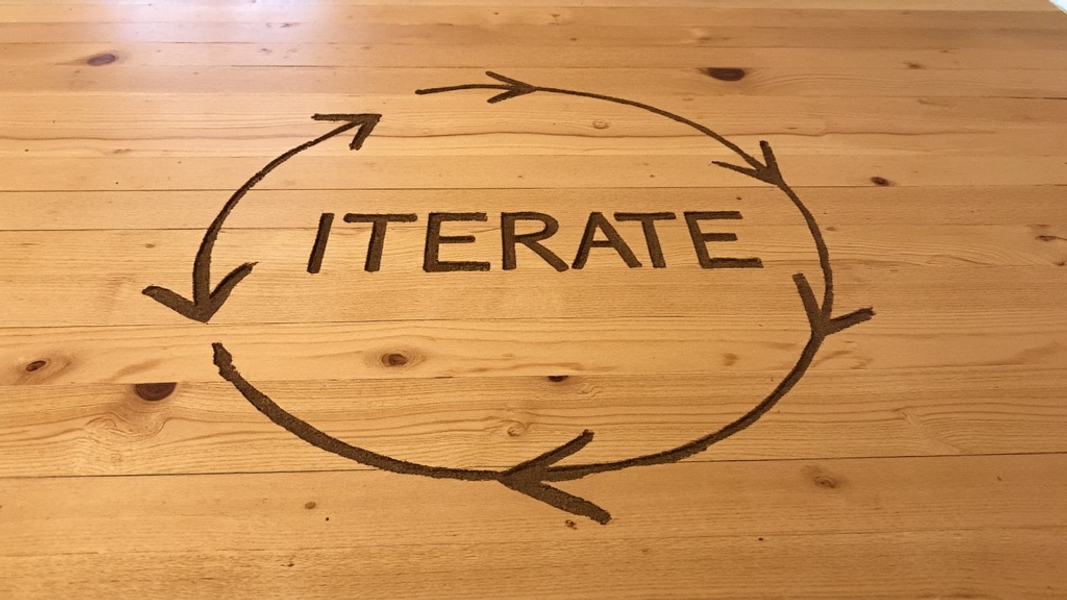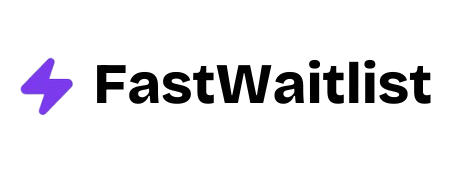
Understanding the Lean Startup Methodology
The lean startup methodology has become a cornerstone for new businesses and innovators. At its core, this approach focuses on creating products that customers actually want, while minimizing waste and maximizing learning. It's about being smart with resources and time, especially when you're just starting out.
The main idea behind lean startup is simple: test your ideas quickly and cheaply. Instead of spending months or years developing a product in secret, you put out a basic version fast. Then you see how people react and improve based on their feedback. This way, you're always making something people want, not just what you think they might want.
Key Components of Lean Startup
The build-measure-learn loop is central to the lean startup method. You build a simple version of your product, measure how people use it, and learn from that data. Then you do it all over again, getting better each time. This loop helps you avoid wasting time on features nobody wants.
Another key part is the Minimum Viable Product (MVP). This is the simplest version of your product that still solves the main problem for your customers. It doesn't need to be perfect or have all the bells and whistles. The point is to get it out there fast so you can start learning.
Pivot or persevere decisions are also crucial. After testing your MVP, you might find that your original idea isn't working. That's when you need to decide: should you change direction (pivot) or keep going with your current plan (persevere)? These decisions are based on the data you collect, not just gut feelings.
Evolution of the Methodology
Since Eric Ries introduced the lean startup concept in 2011, it's grown and changed. Today, it's not just for tech startups anymore. Big companies, non-profits, and even government agencies use these ideas. They've found that being lean and flexible helps in many different situations.
Recent improvements to the methodology include better ways to measure success and more focus on sustainable growth. There's also more emphasis on combining lean startup ideas with other business strategies, like design thinking or agile development. This mix-and-match approach helps companies be both innovative and efficient.
Implementing the Lean Startup Approach
Putting lean startup ideas into practice takes some work, but it's worth it. Here's a step-by-step guide to get you started:
Step 1: Identify Your Value Hypothesis
Your value hypothesis is a guess about what your customers really need and how your product will help them. To figure this out, you need to talk to potential customers. Don't just ask them what they want – watch what they do and listen to their problems.
Start by defining who your target market is. Be specific. Instead of "everyone who likes music," think "college students who listen to indie rock and want to discover new bands." Then, craft a clear value proposition. This is a simple statement that explains how your product solves a problem or improves a situation.
For customer discovery, try techniques like interviews, surveys, or even just hanging out where your potential customers are. The goal is to understand their problems deeply, not to sell them on your solution yet.
Step 2: Build Your Minimum Viable Product
An effective MVP should be just enough to solve the core problem for your customers. It doesn't need to be pretty or have lots of features. The key is to build it quickly so you can start learning.
There are different types of MVPs. A concierge MVP means doing the service manually for a few customers, even if it's not scalable. A Wizard of Oz MVP looks automated to the customer, but you're actually doing everything behind the scenes. Choose the type that lets you test your main assumptions fastest.

When building your MVP, focus on speed over perfection. You want to balance getting something out quickly with making sure it's good enough for people to use and give feedback on. Remember, you'll be improving it based on real user data soon.
Step 3: Measure and Collect Data
Once your MVP is out there, you need to track how people are using it. Focus on a few key metrics that really show if you're solving the problem you set out to solve. For a music app, this might be how often people use it to find new songs, not just how many people download it.
Use tools like Google Analytics or Mixpanel to collect data on how people use your product. But don't just rely on numbers. Talk to your users, watch them use your product, and listen to their feedback. This qualitative data is just as important as the numbers.
Step 4: Learn and Iterate
Now comes the hard part: making sense of all that data. Look for patterns in how people use your product. Are they using it the way you expected? Are there features they love or hate? Use this information to make decisions about what to change.
Be ready to make changes quickly based on what you learn. This might mean adding new features, removing ones that nobody uses, or even changing your whole business model. The key is to make these changes based on real data, not just hunches.
Advanced Lean Startup Techniques
As you get more comfortable with the basics, you can start using some more advanced techniques:
A/B Testing for Startups
A/B testing is a powerful tool for lean startups. It involves showing two different versions of your product to different groups of users and seeing which one performs better. This can help you make decisions about everything from button colors to pricing strategies.
To set up effective A/B tests, start with a clear hypothesis. For example, "Changing our sign-up button from blue to green will increase conversions by 10%." Then, make sure you're only testing one thing at a time so you know what caused any changes you see.
When interpreting results, be careful not to jump to conclusions too quickly. Make sure you have a large enough sample size and that the results are statistically significant. And watch out for common pitfalls, like stopping a test too early or ignoring seasonal effects.
Continuous Deployment
Continuous deployment means pushing out small changes to your product frequently, sometimes multiple times a day. This fits well with lean startup principles because it lets you get feedback on changes quickly.
Implementing a continuous integration/continuous deployment (CI/CD) pipeline can seem scary, but it has big benefits. It lets you fix bugs faster, try out new features quickly, and keep your product always up-to-date. Tools like Jenkins or GitLab can help you set this up.
The trick is balancing speed with stability. You need good automated testing to catch problems before they reach users. And you should have a way to quickly roll back changes if something goes wrong.
Growth Hacking within the Lean Framework
Growth hacking is all about finding clever, low-cost ways to grow your user base quickly. When combined with lean startup principles, it can be very powerful. The key is to use data to guide your growth strategies, just like you do with product development.
For example, Dropbox used a lean growth hacking approach to achieve 300% user growth in just 6 months. They offered extra free storage to users who referred friends, creating a viral loop. This strategy was based on data showing that users who shared folders invited others 20% of the time.
To use growth hacking in a lean way, start with small experiments. Use the build-measure-learn loop to test different growth strategies. Focus on strategies that are cheap to try and easy to measure. And always tie your growth efforts back to your core value proposition.
Overcoming Challenges in Lean Startup Implementation
While the lean startup method can be very effective, it's not always easy to put into practice. Here are some common challenges and how to overcome them:
Common Obstacles
Resistance to change is a big hurdle, especially in larger organizations. People get comfortable with the way things have always been done. To overcome this, focus on small wins at first. Show how lean methods can solve real problems the company is facing.
Misinterpreting data is another common issue. It's easy to see patterns that aren't really there or to ignore data that doesn't fit your expectations. To avoid this, always look for ways to verify your conclusions. Use multiple data sources and get different perspectives on what the data means.
Premature scaling can kill a startup. This happens when you start growing before you've really figured out your product-market fit. To avoid this, make sure you have solid, repeatable success with your MVP before you start scaling up.
Strategies for Success
Building a culture of experimentation is key to making lean startup work. Encourage everyone in your team to come up with ideas and run small tests. Celebrate learning from failures as much as successes. This helps create an environment where innovation can thrive.
Effective communication of lean principles is also crucial. Make sure everyone understands why you're using this approach and what it means for their work. Use simple language and real examples from your company to explain the concepts.
Balancing long-term vision with short-term iterations can be tricky. It's important to have a big-picture goal, but be willing to adjust how you get there based on what you learn. Regular check-ins to make sure your short-term actions are still aligned with your long-term goals can help.
Case Study: Airbnb's Turnaround
Airbnb is a great example of how lean startup principles can turn a struggling idea into a huge success. When they started, they were barely making any money. But instead of giving up, they used lean methods to figure out why.
They realized their biggest problem was that the photos of listings weren't very good. So they made a simple change: they went to New York and took high-quality photos of the listings themselves. This small, cheap experiment led to bookings doubling almost overnight.
From there, Airbnb kept using lean methods to improve. They constantly tested new features and business models. They used data to guide their decisions about what to focus on. And they weren't afraid to make big changes when the data showed it was necessary.
The key lessons from Airbnb's story are:
- Start with small, cheap experiments to test your biggest assumptions.
- Use data to guide your decisions, not just gut feelings.
- Be willing to make big changes if that's what the data shows you need to do.

The Future of Lean Startup Methodology
As we look ahead, the lean startup method is likely to keep changing and growing. Here are some trends and predictions for what's coming next:
Emerging Trends
Artificial Intelligence (AI) and machine learning are starting to play a bigger role in lean startup practices. These technologies can help analyze data faster and spot patterns that humans might miss. This could make the build-measure-learn loop even more efficient.
More big companies are using lean startup ideas for innovation. They're setting up small teams within the company to act like startups, testing new ideas quickly and cheaply. This helps them stay competitive in fast-changing markets.
There's also a growing trend of using lean startup methods for social good. Non-profits and social enterprises are finding that these techniques help them make a bigger impact with limited resources.
Predictions for the Next Decade
In the coming years, we might see new ways of thinking about MVPs. As technology gets more complex, the idea of what's "minimum" might change. We might see more use of simulations or virtual reality to test ideas before building anything physical.
New tools for measuring and analyzing data are likely to emerge. These could make it easier for non-technical founders to use lean methods effectively. We might also see new metrics that better capture the complexities of modern businesses.
Some of the core principles of lean startup might shift as we learn more about how innovation really works. For example, there might be more emphasis on building strong teams or on understanding the broader ecosystem a startup operates in.
Preparing for Future Challenges
To stay ahead in this changing world, entrepreneurs need to be ready to adapt. This means always being open to learning new skills and trying new approaches. It also means staying curious about new technologies and how they might affect your business.
Embracing new tools and methods as they come along will be important. But it's also crucial to remember the core ideas behind lean startup: test your assumptions, learn from real data, and be willing to change course when needed. These principles are likely to remain valuable no matter how the details of the method evolve.
Conclusion
The lean startup method has changed how we think about building new businesses. It's all about learning fast, being flexible, and focusing on what customers really want. By following these principles, you can save time and money while creating something people actually need.
Remember, the key steps are:
- Figure out your main idea and who it's for.
- Build a simple version to test that idea.
- Measure how people use it.
- Learn from that data and make it better.
Keep doing this over and over, and you'll be on your way to building a successful startup.
Don't be afraid to try these ideas out. Start small, learn as you go, and be ready to change your plans based on what you discover. The lean startup method isn't always easy, but it can help you avoid common pitfalls and increase your chances of success.
If you're ready to put these ideas into practice, a great first step is to create a simple landing page to test interest in your idea. Tools like FastWaitlist can help you set this up quickly and start gathering valuable data right away.
Additional Resources
To dive deeper into lean startup methods, check out these resources:
Books and Publications
- "The Lean Startup" by Eric Ries - the book that started it all, with updated editions available.
- "Running Lean" by Ash Maurya - a practical guide to implementing lean startup ideas.
- "The Startup Owner's Manual" by Steve Blank and Bob Dorf - a detailed handbook for building a successful startup.
Online Courses and Workshops
- Udacity's Lean Startup Course - a free online course covering the basics.
- Y Combinator's Startup School - a free online program with lessons from successful founders.
Tools and Software
- Lean Stack - a suite of tools for lean business modeling and planning.
- Mixpanel - for advanced analytics and user behavior tracking.
- Optimizely - for running A/B tests and experiments.
Community and Networking
- Lean Startup Circle - a global network of lean startup practitioners.
- Startup Grind - events and resources for entrepreneurs, including many focused on lean methods.
These resources can help you deepen your understanding of lean startup principles and connect with others who are putting these ideas into practice. Remember, the best way to learn is by doing, so don't hesitate to start applying these concepts to your own projects.
